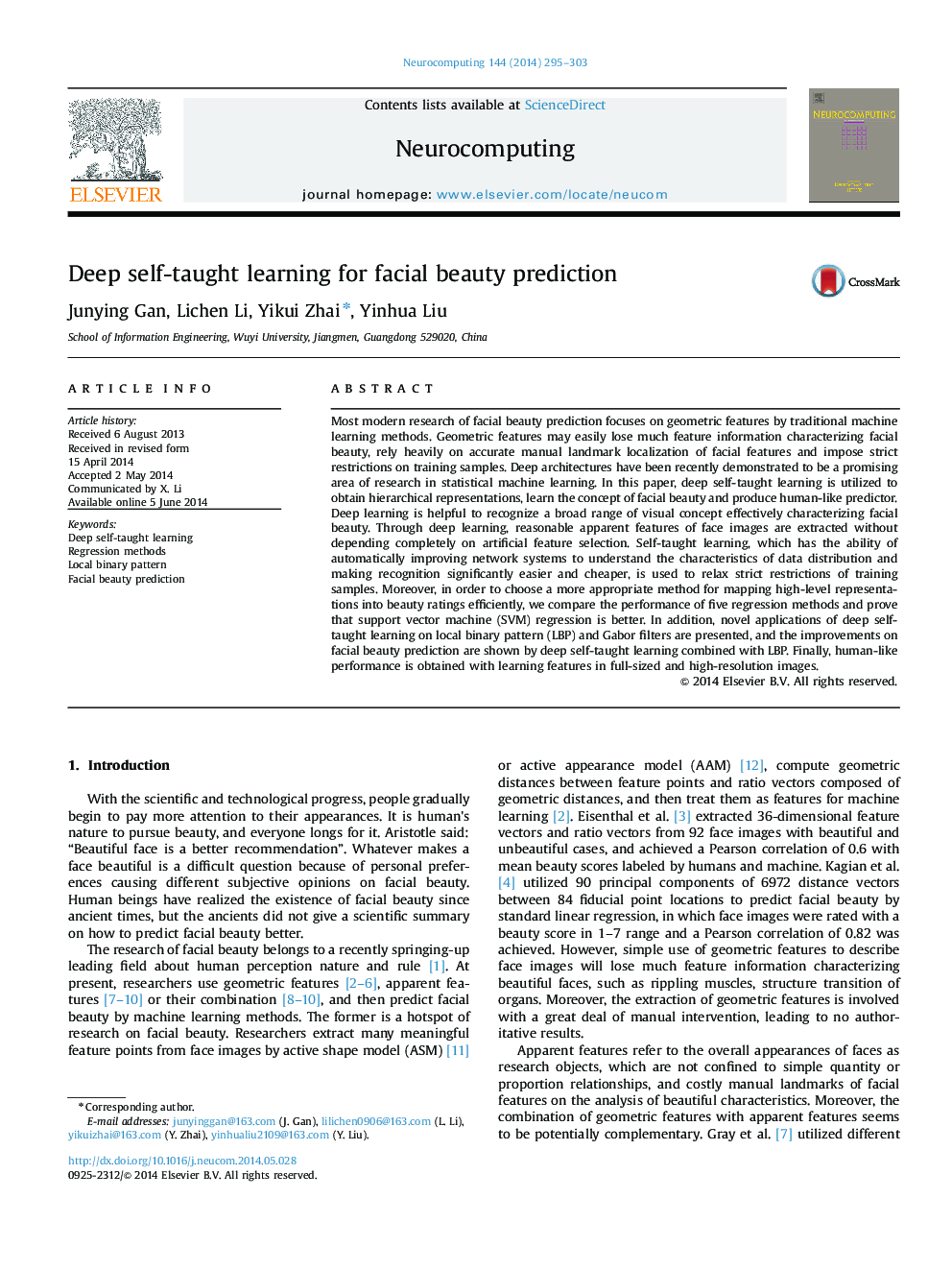| کد مقاله | کد نشریه | سال انتشار | مقاله انگلیسی | نسخه تمام متن |
|---|---|---|---|---|
| 412203 | 679619 | 2014 | 9 صفحه PDF | دانلود رایگان |
Most modern research of facial beauty prediction focuses on geometric features by traditional machine learning methods. Geometric features may easily lose much feature information characterizing facial beauty, rely heavily on accurate manual landmark localization of facial features and impose strict restrictions on training samples. Deep architectures have been recently demonstrated to be a promising area of research in statistical machine learning. In this paper, deep self-taught learning is utilized to obtain hierarchical representations, learn the concept of facial beauty and produce human-like predictor. Deep learning is helpful to recognize a broad range of visual concept effectively characterizing facial beauty. Through deep learning, reasonable apparent features of face images are extracted without depending completely on artificial feature selection. Self-taught learning, which has the ability of automatically improving network systems to understand the characteristics of data distribution and making recognition significantly easier and cheaper, is used to relax strict restrictions of training samples. Moreover, in order to choose a more appropriate method for mapping high-level representations into beauty ratings efficiently, we compare the performance of five regression methods and prove that support vector machine (SVM) regression is better. In addition, novel applications of deep self-taught learning on local binary pattern (LBP) and Gabor filters are presented, and the improvements on facial beauty prediction are shown by deep self-taught learning combined with LBP. Finally, human-like performance is obtained with learning features in full-sized and high-resolution images.
Journal: Neurocomputing - Volume 144, 20 November 2014, Pages 295–303
